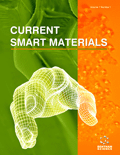Abstract
Background: Emission of Secondary electron from material surface is the key parameter which defines all properties of plasma bounded by that surface. In dc glow discharge plasmas, these emitted electrons from the cathode provide the necessary feedback to sustain the discharge. There are various processes responsible for emission of electron from the cathode surface. The most dominant among these processes are bombardment of energetic neutrals, excited atoms or molecules, photons, surface reactions etc. in addition to the ion induced secondary electron emission. Further, among these various governing processes contribution of each process, to secondary electron yield vary according to the operating discharge condition. The secondary electrons emitted due to all the above mentioned processes are called Effective Secondary Electron Emission Coefficient (ESEEC). Measurement of ESEEC is highly desired in theoretical as well as experimental gas discharge physics. In this work, we propose a novel model for estimation of ESEEC and the results were obtained using this model for cathode material made up of Brass.
Methods: A self-consistent model for measurement of ESEEC is developed under glow discharge plasma condition. It requires knowledge of only two experimental parameters namely total discharge power across the electrode (PT) which is product of discharge current (I) and applied voltage (V) and the fraction of power carried by ion to the cathode (Pi) to estimate the value of ESEEC. The power carried by ion to the cathode has been estimated using power balance at cathode. Results: The measured value of ESEEC varies from 1.65 - 0.81 for the constant cathode bias of -600 V and pressure range of 0.08 - 0.4 mbar. The obtained experimental results are verified by two methods of power influx measurement namely, from the slope of temporal temperature profile of cathode while cooling and heating cycles and from the Stefan’s Boltzmann Law at saturation temperature of the cathode. The obtained values of power influx from both the methods are in good agreement with each other. Conclusion: A self consistent model for measurement of ESEEC has been proposed. Using this model, the value of ESEEC for Brass has been successfully obtained, under glow discharge plasma condition. The proposed model is based on power balance in a discharge process and requires measurement of only two discharge parameters, namely, total discharge power (PT) and the fraction of discharge power carried by ions i.e. (Pi). This model may be applied over wide range of operating parameters to obtain the value of ESEEC for different materials.Keywords: Cathode heating, effective secondary electron emission coefficient, glow discharge plasma, power balance, power influx to the cathode.
Graphical Abstract
 20
20




